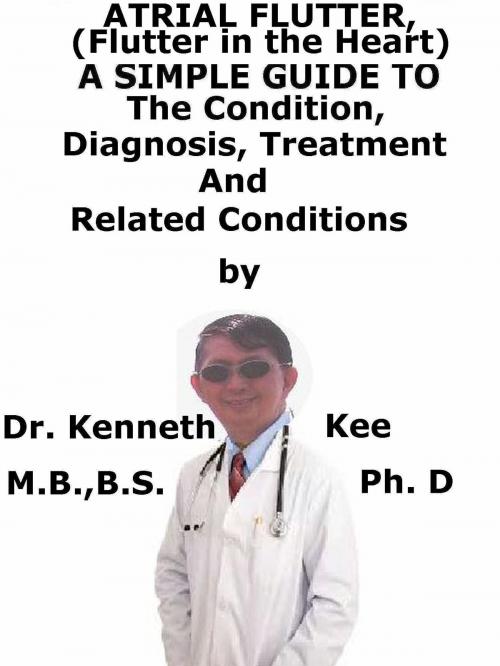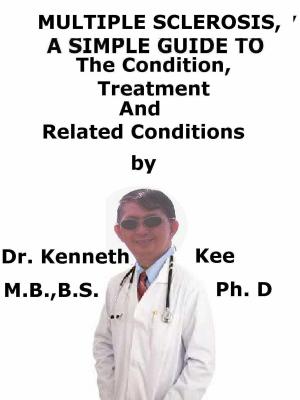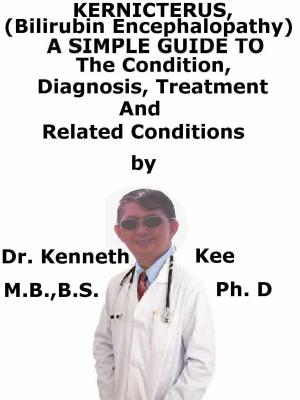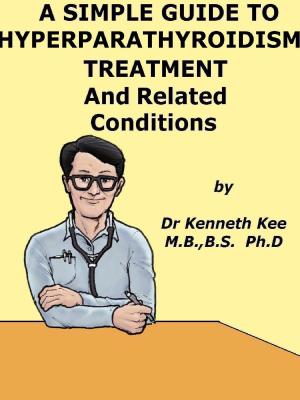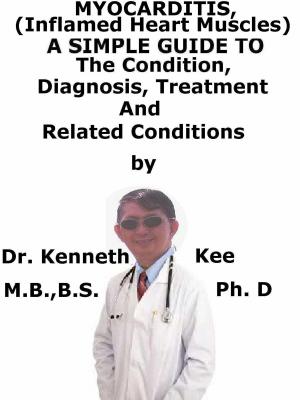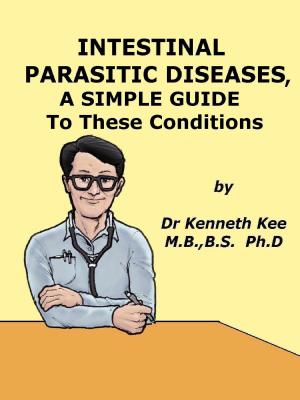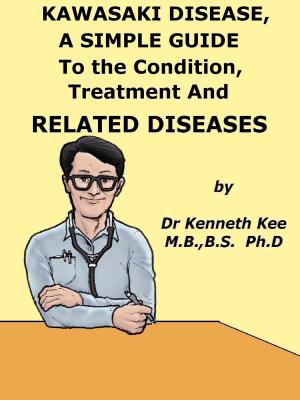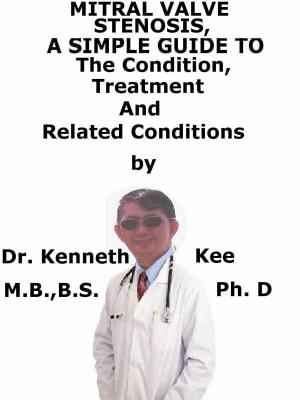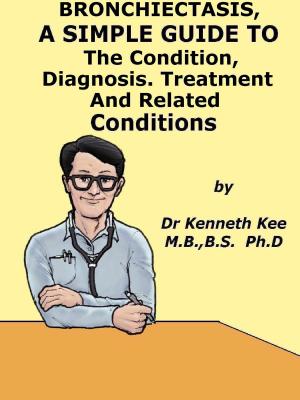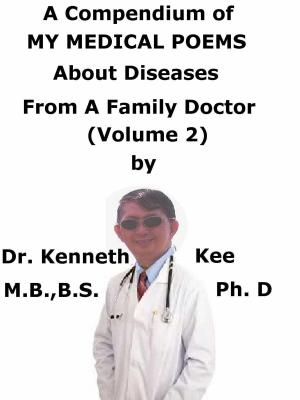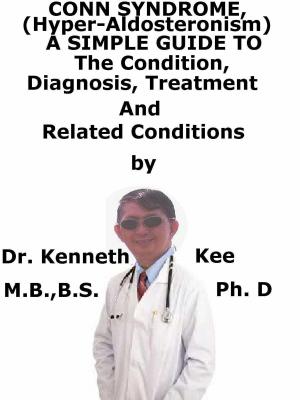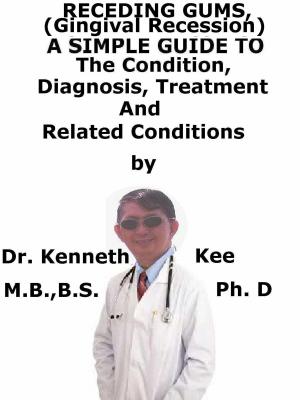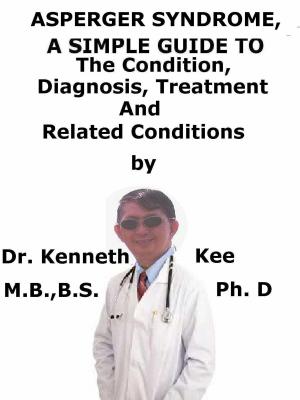Atrial Flutter (Flutter in the Heart) A Simple Guide To The Condition, Diagnosis, Treatment And Related Conditions
Nonfiction, Health & Well Being, Medical, Specialties, Internal Medicine, Cardiology, Health, Ailments & Diseases, Heart| Author: | Kenneth Kee | ISBN: | 9781370848096 |
| Publisher: | Kenneth Kee | Publication: | August 22, 2017 |
| Imprint: | Smashwords Edition | Language: | English |
| Author: | Kenneth Kee |
| ISBN: | 9781370848096 |
| Publisher: | Kenneth Kee |
| Publication: | August 22, 2017 |
| Imprint: | Smashwords Edition |
| Language: | English |
Atrial flutter (AFL) is an abnormality of the heart rhythm, resulting in a rapid and sometimes irregular heartbeat.
It happens when the upper chambers of the heart beat too fast.
When the chambers in the top of the heart (atria) beat faster than the bottom ones (ventricles), it causes the heart rhythm to be out of sync.
Atrial flutter is a similar disorder to the more common atrial fibrillation (AFib).
The main danger of atrial flutter is that the heart does not pump blood well when beating too fast.
When blood is not pumped out properly, the vital organs such as the heart and brain may not get sufficient oxygen from the blood.
Types of Atrial Flutter:
1. Type I, or typical, is well defined both anatomically and electrically (movement counterclockwise).
It is always being interrupted by rapid atrial pacing, with atrial rates from 240-350 bpm.
2. Type II, or atypical, is not fully typically featured (movement clockwise).
It is linked with atrial rates above 350 bpm.
Atrial flutter can come and go; it is then known as paroxysmal atrial flutter.
More often, atrial flutter lasts for days to weeks and is known as persistent atrial flutter.
Main differences between AFL and AFib:
1. In atrial flutter, the electrical impulses are organized.
In AFib, the electrical impulses are chaotic.
2. AFib is more common than atrial flutter.
3. Ablation therapy is more successful in people with atrial flutter.
4. In atrial flutter, there is a "sawtooth" pattern on an ECG.
In AFib, the ECG test shows an irregular ventricular rate.
5. The symptoms of atrial flutter tend to be less severe than the symptoms of AFib.
People with atrial flutter are likely to develop AFib, even after treatment.
Both conditions carry increased risk of stroke, normally managed by drugs (such as warfarin or a newer anticoagulant).
Medical Heart Disorders causing Atrial Flutter:
1. Decreased blood flow to the heart (ischemia) due to coronary heart disease
2. High blood pressure (hypertension)
3. Disease of the heart muscle (cardiomyopathy)
4. Abnormalities of the heart valves
5. An abnormally enlarged chamber of the heart (hypertrophy)
Symptoms:
1. Fast heart rate
2. A fluttering feeling in the chest
3. Shortness of breath
4. Pressure or tightness in the chest
5. Dizziness or lightheaded
6. Anxiety
7. Trouble doing everyday activities because of fatigue
Diagnosis:
Doctors begin to diagnose possible AFL if the heartbeat at rest goes above 100 beat per minute.
Electrocardiogram measures and records the electrical impulses controlling the beating of the heart.
The purpose of a mobile ECG is to take reported proof of the arrhythmia.
Echocardiograms use ultrasound to measure the flow of blood through the heart and blood vessels.
EP (electrophysiology) studies are a more invasive way to record heart rhythm with a catether to the heart.
Treatment
The doctor’s main goal is to restore the heart rhythm to normal.
Cardioversion (defibrillation) uses electricity to shock the heart’s rhythm back to normal.
Some people with newly diagnosed atrial flutter convert to a normal rhythm spontaneously in 24-48 hours but may recur.
Most patients with atrial flutter, in people older than 65 years, should take a blood-thinning medicine called warfarin (Coumadin) to reduce this risk of stroke or aspirin
Rhythm control Medicines
1. Amiodarone (Cordarone),
2. Sotalol (Betapace),
3. Propafenone (Rythmol), and
4. Flecainide (Tambocor).
Rate Control Medicines:
1. Digoxin.
2. Beta-blockers
3. Calcium channel blockers,
4. Dofetilide
Radiofrequency catheter ablation may provide long-term successful treatment by obliterating some abnormal conduction pathways in the atria.
TABLE OF CONTENT
Introduction
Chapter 1 Atrial Flutter
Chapter 2 Causes
Chapter 3 Symptoms
Chapter 4 Diagnosis
Chapter 5 Treatment
Chapter 6 Prognosis
Chapter 7 Atrial Fibrillation
Chapter 8 Palpitations
Epilogue
Atrial flutter (AFL) is an abnormality of the heart rhythm, resulting in a rapid and sometimes irregular heartbeat.
It happens when the upper chambers of the heart beat too fast.
When the chambers in the top of the heart (atria) beat faster than the bottom ones (ventricles), it causes the heart rhythm to be out of sync.
Atrial flutter is a similar disorder to the more common atrial fibrillation (AFib).
The main danger of atrial flutter is that the heart does not pump blood well when beating too fast.
When blood is not pumped out properly, the vital organs such as the heart and brain may not get sufficient oxygen from the blood.
Types of Atrial Flutter:
1. Type I, or typical, is well defined both anatomically and electrically (movement counterclockwise).
It is always being interrupted by rapid atrial pacing, with atrial rates from 240-350 bpm.
2. Type II, or atypical, is not fully typically featured (movement clockwise).
It is linked with atrial rates above 350 bpm.
Atrial flutter can come and go; it is then known as paroxysmal atrial flutter.
More often, atrial flutter lasts for days to weeks and is known as persistent atrial flutter.
Main differences between AFL and AFib:
1. In atrial flutter, the electrical impulses are organized.
In AFib, the electrical impulses are chaotic.
2. AFib is more common than atrial flutter.
3. Ablation therapy is more successful in people with atrial flutter.
4. In atrial flutter, there is a "sawtooth" pattern on an ECG.
In AFib, the ECG test shows an irregular ventricular rate.
5. The symptoms of atrial flutter tend to be less severe than the symptoms of AFib.
People with atrial flutter are likely to develop AFib, even after treatment.
Both conditions carry increased risk of stroke, normally managed by drugs (such as warfarin or a newer anticoagulant).
Medical Heart Disorders causing Atrial Flutter:
1. Decreased blood flow to the heart (ischemia) due to coronary heart disease
2. High blood pressure (hypertension)
3. Disease of the heart muscle (cardiomyopathy)
4. Abnormalities of the heart valves
5. An abnormally enlarged chamber of the heart (hypertrophy)
Symptoms:
1. Fast heart rate
2. A fluttering feeling in the chest
3. Shortness of breath
4. Pressure or tightness in the chest
5. Dizziness or lightheaded
6. Anxiety
7. Trouble doing everyday activities because of fatigue
Diagnosis:
Doctors begin to diagnose possible AFL if the heartbeat at rest goes above 100 beat per minute.
Electrocardiogram measures and records the electrical impulses controlling the beating of the heart.
The purpose of a mobile ECG is to take reported proof of the arrhythmia.
Echocardiograms use ultrasound to measure the flow of blood through the heart and blood vessels.
EP (electrophysiology) studies are a more invasive way to record heart rhythm with a catether to the heart.
Treatment
The doctor’s main goal is to restore the heart rhythm to normal.
Cardioversion (defibrillation) uses electricity to shock the heart’s rhythm back to normal.
Some people with newly diagnosed atrial flutter convert to a normal rhythm spontaneously in 24-48 hours but may recur.
Most patients with atrial flutter, in people older than 65 years, should take a blood-thinning medicine called warfarin (Coumadin) to reduce this risk of stroke or aspirin
Rhythm control Medicines
1. Amiodarone (Cordarone),
2. Sotalol (Betapace),
3. Propafenone (Rythmol), and
4. Flecainide (Tambocor).
Rate Control Medicines:
1. Digoxin.
2. Beta-blockers
3. Calcium channel blockers,
4. Dofetilide
Radiofrequency catheter ablation may provide long-term successful treatment by obliterating some abnormal conduction pathways in the atria.
TABLE OF CONTENT
Introduction
Chapter 1 Atrial Flutter
Chapter 2 Causes
Chapter 3 Symptoms
Chapter 4 Diagnosis
Chapter 5 Treatment
Chapter 6 Prognosis
Chapter 7 Atrial Fibrillation
Chapter 8 Palpitations
Epilogue
